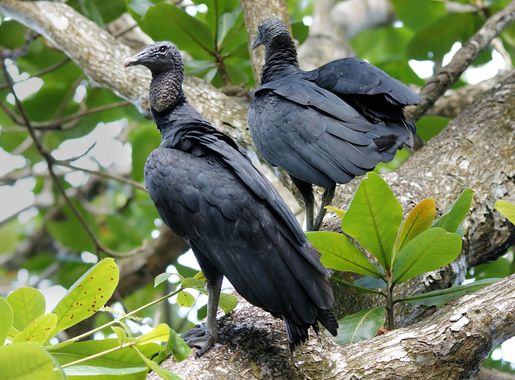
Cahuita National Park: Costa Rica's Coastal Gem
Discover the natural beauty and cultural richness of Cahuita National Park in Costa Rica, a paradise for beach lovers, wildlife enthusiasts, and adventure seekers.
Cahuita National Park is a stunning blend of coastal beauty, lush rainforests, and vibrant wildlife. Located on the Caribbean coast of Costa Rica, this national park offers a serene escape from the hustle and bustle of everyday life. Visitors can enjoy pristine white-sand beaches, crystal-clear waters, and the largest coral reef in Costa Rica, making it a paradise for snorkelers and divers alike. The park is also home to a variety of wildlife, including howler monkeys, sloths, and a myriad of bird species. The well-maintained trails provide an excellent opportunity for hiking and exploring the diverse flora and fauna. The Punta Cahuita trail, in particular, offers breathtaking views of the coastline and is a must-visit for nature enthusiasts. In addition to its natural beauty, Cahuita National Park has a rich cultural heritage. The nearby town of Cahuita is known for its Afro-Caribbean culture, with vibrant music, delicious cuisine, and friendly locals. The park's entrance fee is based on donations, making it an accessible destination for all travelers. Whether you're looking to relax on the beach, explore underwater worlds, or immerse yourself in local culture, Cahuita National Park has something for everyone.
Local tips in Cahuita National Park
- Bring plenty of water and sun protection, as the tropical climate can be quite intense.
- Visit early in the morning to avoid crowds and catch a glimpse of wildlife when they are most active.
- Snorkeling gear can be rented in the nearby town of Cahuita, but it's best to bring your own for convenience.
- Wear sturdy shoes if you plan to hike the trails, as they can be muddy and slippery, especially after rain.
- Respect the local wildlife by keeping a safe distance and not feeding the animals.
- Try the local cuisine in Cahuita town, especially the traditional Caribbean dishes like rice and beans with coconut milk.
Cahuita National Park: Costa Rica's Coastal Gem
Cahuita National Park is a stunning blend of coastal beauty, lush rainforests, and vibrant wildlife. Located on the Caribbean coast of Costa Rica, this national park offers a serene escape from the hustle and bustle of everyday life. Visitors can enjoy pristine white-sand beaches, crystal-clear waters, and the largest coral reef in Costa Rica, making it a paradise for snorkelers and divers alike. The park is also home to a variety of wildlife, including howler monkeys, sloths, and a myriad of bird species. The well-maintained trails provide an excellent opportunity for hiking and exploring the diverse flora and fauna. The Punta Cahuita trail, in particular, offers breathtaking views of the coastline and is a must-visit for nature enthusiasts. In addition to its natural beauty, Cahuita National Park has a rich cultural heritage. The nearby town of Cahuita is known for its Afro-Caribbean culture, with vibrant music, delicious cuisine, and friendly locals. The park's entrance fee is based on donations, making it an accessible destination for all travelers. Whether you're looking to relax on the beach, explore underwater worlds, or immerse yourself in local culture, Cahuita National Park has something for everyone.
When is the best time to go to Cahuita National Park?
Iconic landmarks you can’t miss
La Paz Waterfall Gardens Nature Park
Experience the majestic La Paz Waterfall Gardens, a natural sanctuary in Costa Rica filled with stunning waterfalls, lush gardens, and vibrant wildlife.
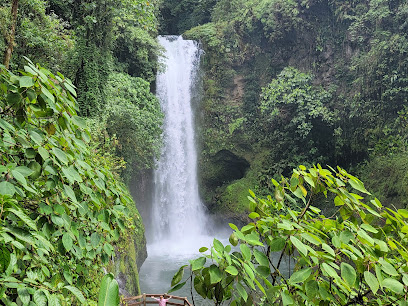
Parque Nacional Cahuita
Discover the stunning biodiversity and cultural heritage of Parque Nacional Cahuita, a must-visit national park on Costa Rica's Caribbean coast.

Refugio Nacional Gandoca-Manzanillo
Discover the diverse ecosystems and breathtaking beauty of Refugio Nacional Gandoca-Manzanillo, a must-visit wildlife refuge on Costa Rica's Caribbean coast.
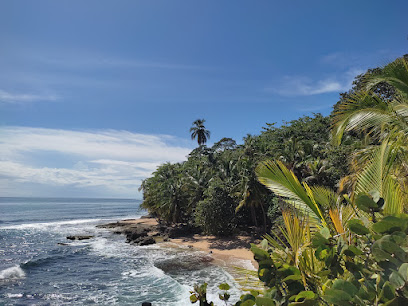
Parque Nacional Tortuguero
Experience the breathtaking beauty of Parque Nacional Tortuguero, a haven for wildlife enthusiasts and nature lovers in Costa Rica's lush landscapes.

Parque Nacional Los Quetzales
Discover the enchanting Parque Nacional Los Quetzales, a lush paradise in Costa Rica featuring diverse wildlife, stunning trails, and the iconic quetzal bird.
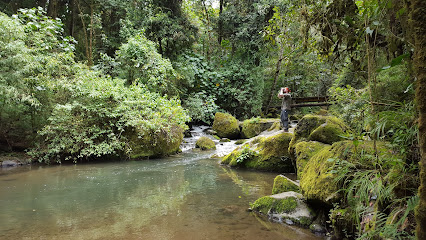
Parque Nacional Tapantí - Macizo de la Muerte
Explore the stunning landscapes and rich biodiversity of Parque Nacional Tapantí - Macizo de la Muerte, a must-visit national park in Costa Rica.

Playa Puerto Viejo
Experience the vibrant culture and stunning landscapes of Playa Puerto Viejo, a must-visit Caribbean gem in Costa Rica.
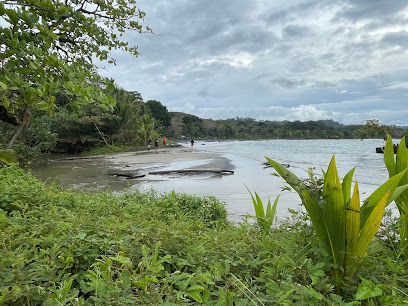
Sloth Sanctuary of Costa Rica
Discover the heartwarming world of sloths at the Sloth Sanctuary of Costa Rica, where conservation and education meet in a lush tropical setting.
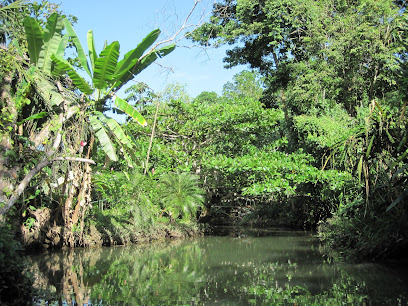
Cariblue Beach and Jungle Resort
Experience the beauty of Costa Rica at Cariblue Beach and Jungle Resort, where lush jungles meet pristine beaches in a tranquil paradise.

Cacao Trails - Museo de Cacao
Explore the fascinating journey of cacao at Cacao Trails - Museo de Cacao, where chocolate lovers discover history and indulge in delightful tastings.
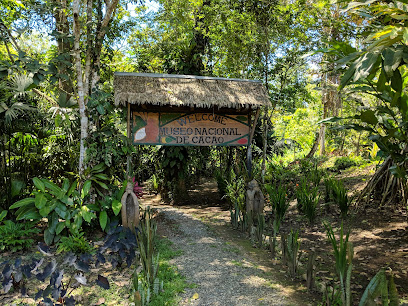
Parque Nacional Cahuita - Entrada Puerto Vargas
Explore the lush jungles and stunning beaches of Parque Nacional Cahuita, a must-visit paradise for nature lovers in Costa Rica.
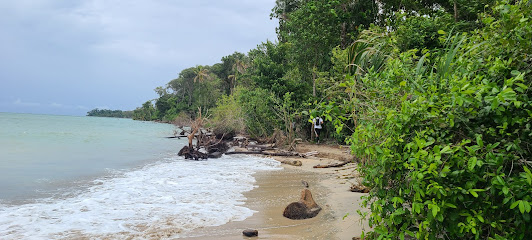
Atlantida Lodge - Cahuita
Discover the blend of comfort and nature at Atlantida Lodge, your perfect getaway in Cahuita, Costa Rica, near the stunning Cahuita National Park.

Cahuita's Taste Caribbean Soul Food
Experience authentic Caribbean cuisine in Cahuita, where every dish tells a story of flavor and tradition, all in a relaxed and inviting atmosphere.
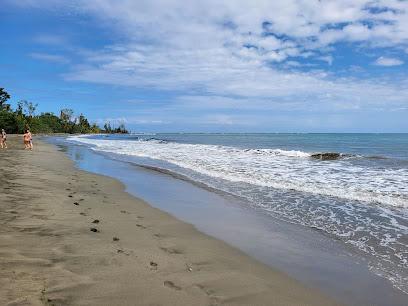
Cahuita National Park Hotel And Restaurant
Experience the allure of Cahuita National Park Hotel and Restaurant, where nature, comfort, and local cuisine converge on Costa Rica's stunning Caribbean coast.
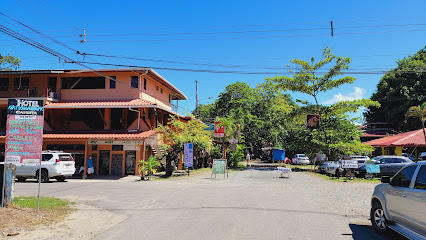
Las Olas
Discover the flavors of Costa Rica at Las Olas, a charming restaurant in Cahuita offering local cuisine in a warm and inviting atmosphere.
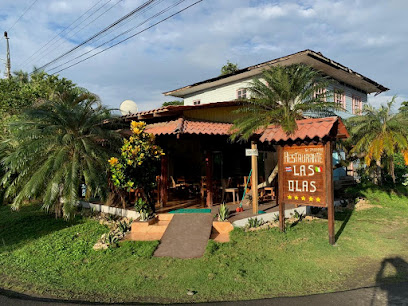
Unmissable attractions to see
Parque Balvanero Vargas
Explore the vibrant Parque Balvanero Vargas in Limón, a lush park perfect for relaxation, wildlife spotting, and cultural experiences.
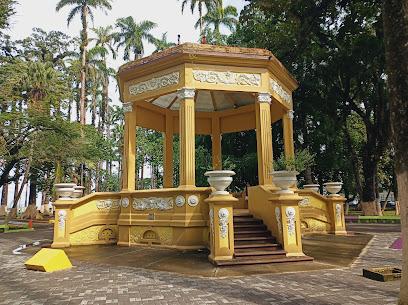
Cacao Trails - Museo de Cacao
Explore the delicious world of chocolate at Cacao Trails - Museo de Cacao, the ultimate destination for cacao enthusiasts in Puerto Viejo de Talamanca.
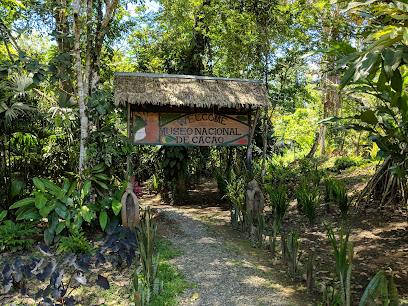
Limón's Municipal Market
Explore Limón's Municipal Market, a vibrant hub of local culture where authentic Costa Rican flavors and crafts await you.
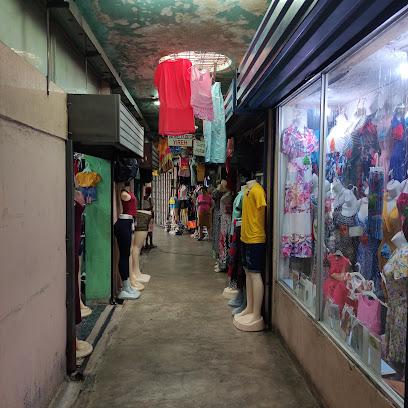
Playa Cocles
Discover the beauty of Playa Cocles, a hidden gem on Costa Rica's Caribbean coast, where golden sands meet lush tropical landscapes.
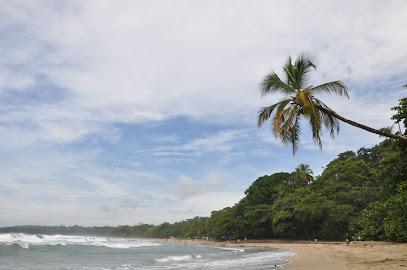
Sacred Heart Cathedral (catholic church)
Explore the Sacred Heart Cathedral in Limón - an architectural jewel and spiritual sanctuary showcasing Costa Rican culture and history.
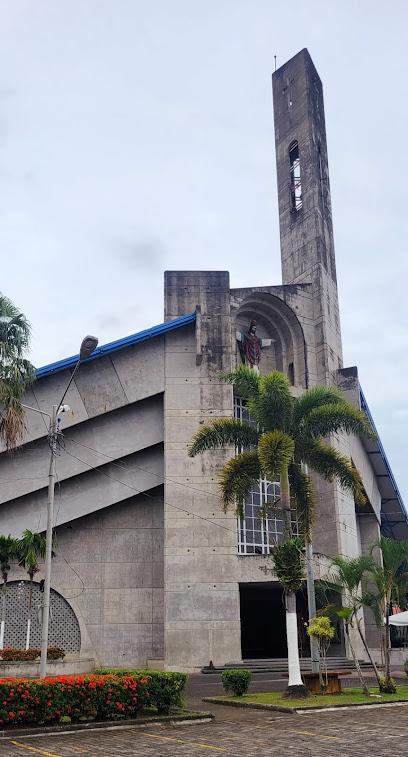
Punta Cahuita
Explore Punta Cahuita, Costa Rica's hidden gem, where breathtaking beaches meet lush jungles and vibrant wildlife awaits every adventurer.
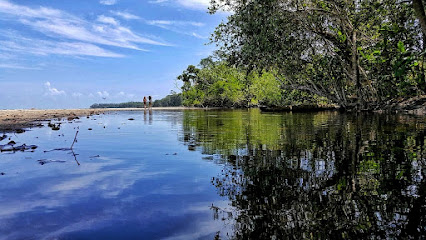
Maratopia & Tour‘s
Experience the vibrant wildlife and lush landscapes of Maratopia, the premier animal park in Costa Rica's Limón Province, offering adventure and conservation education.

Punta Vargas
Explore the stunning biodiversity and pristine beaches of Punta Vargas, a national park in Costa Rica, perfect for nature lovers and adventure seekers alike.
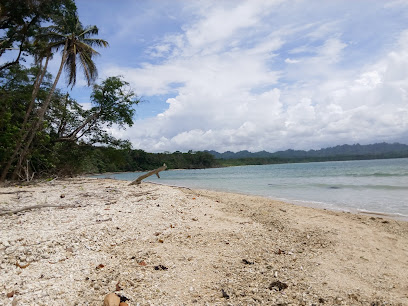
Iki.dreams Cahuita
Explore Iki.dreams Cahuita, a tropical paradise in Costa Rica's Caribbean coast, where adventures and nature come together in perfect harmony.
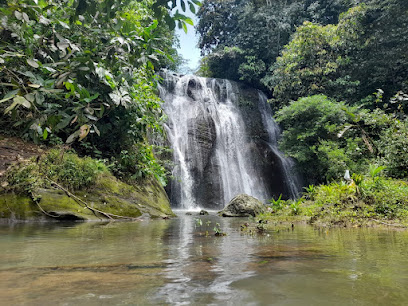
Round rock beach
Experience the breathtaking beauty and tranquility of Round Rock Beach in Cahuita, Costa Rica, where adventure meets serenity in a tropical paradise.
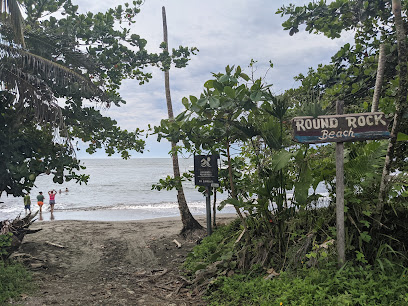
Playa Grande en Cahuita
Explore the stunning Playa Grande in Cahuita, a serene beach destination rich in biodiversity and natural beauty along Costa Rica's Caribbean coast.

Playa Blanca
Explore the stunning Playa Blanca in Cahuita, Limón Province, where pristine beaches meet lush landscapes and vibrant local culture.
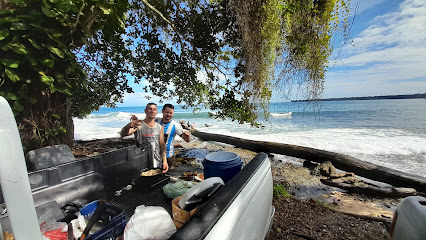
Posas Cahuita
Explore Posas Cahuita, a natural oasis in Costa Rica, famous for its stunning pools and rich biodiversity, perfect for relaxation and adventure.
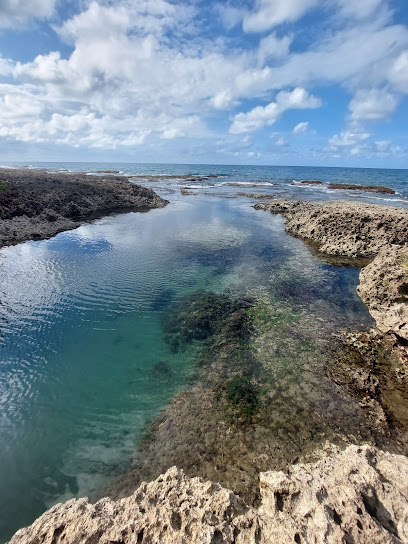
Parquecito Cahuita
Explore Parquecito Cahuita: A tranquil park in Limón Province, Costa Rica, perfect for wildlife spotting and serene nature walks.
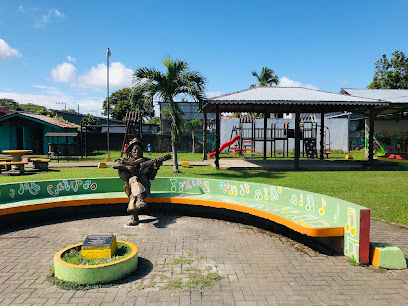
Mirador Cahuita Cochabamba
Experience stunning panoramic views at Mirador Cahuita, a must-see destination in Limón Province showcasing Costa Rica's natural beauty.
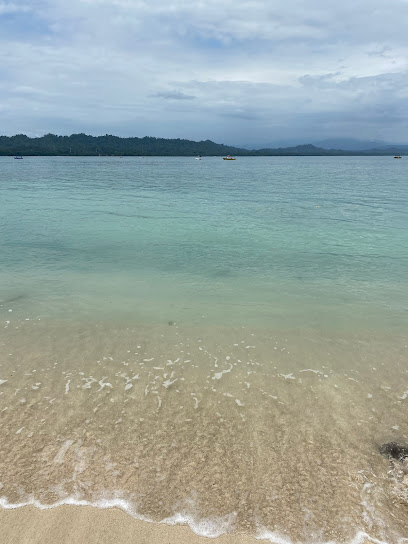
Essential places to dine
Parque Nacional Cahuita
Explore Parque Nacional Cahuita: A Tropical Haven with Pristine Beaches and Rich Biodiversity in Costa Rica's Caribbean Coast.
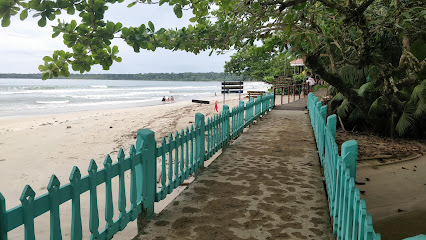
Coco's Bar
Discover the vibrant flavors of Costa Rica at Coco's Bar in Cahuita – where great food meets a lively atmosphere.

Soda Kawe
Discover authentic Caribbean flavors at Soda Kawe in Cahuita - your go-to spot for delicious local cuisine amidst stunning natural beauty.
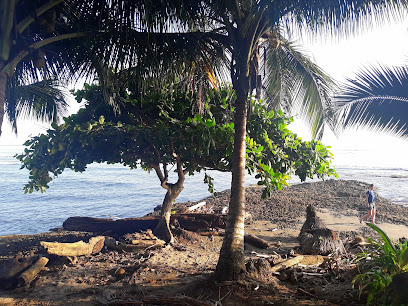
Ricky's Bar
Experience authentic Costa Rican cuisine at Ricky's Bar in Cahuita - where flavor meets fun in a vibrant atmosphere.

El Rincón del Amor
Experience authentic Costa Rican cuisine at El Rincón del Amor in Cahuita – where every dish tells a story.
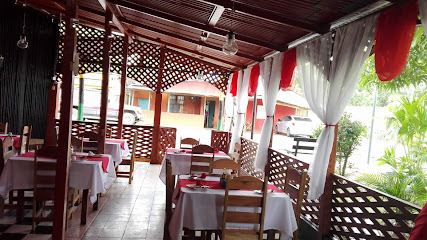
Restaurante Pizzeria Cahuita
Experience authentic Italian cuisine at Restaurante Pizzeria Cahuita—where every bite transports you straight to Italy amid lush tropical surroundings.

Aroma, Coffee Bar & Breakfast
Discover Aroma in Cahuita: where exceptional coffee meets delicious breakfast in a cozy atmosphere.
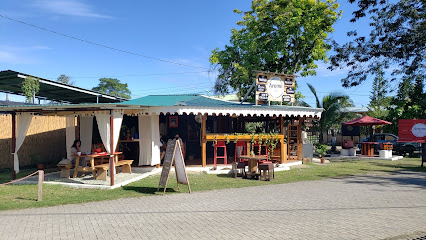
Sobre las Olas by Gondwana
Savor authentic Costa Rican flavors at Sobre las Olas by Gondwana on Playa Negra - where every meal is an oceanfront delight.
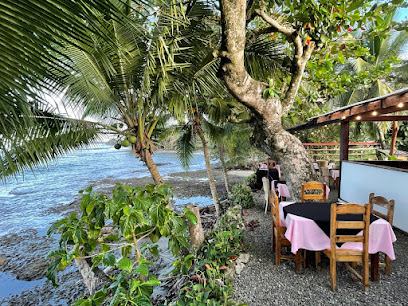
Cahuita's Taste Caribbean Soul Food
Experience authentic Caribbean flavors at Cahuita's Taste Soul Food - a breakfast haven in Costa Rica’s enchanting Cahuita.
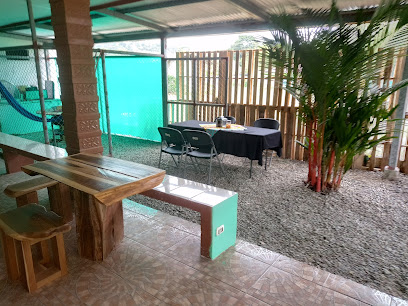
DelRita Patty
Experience the vibrant flavors of Costa Rica at DelRita Patty, Cahuita's favorite takeout restaurant offering delicious and affordable local cuisine.
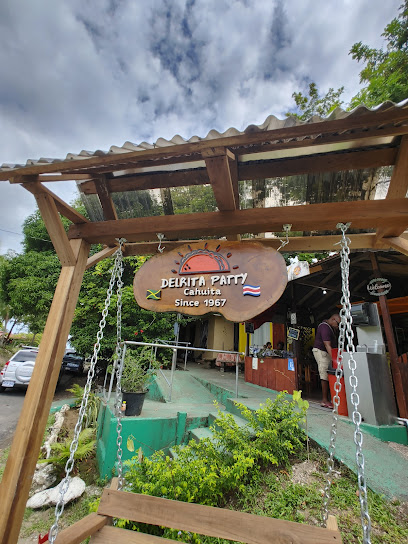
Cahuita National Park Hotel And Restaurant
Discover tranquility at Cahuita National Park Hotel & Restaurant - where comfort meets nature's splendor in Costa Rica.
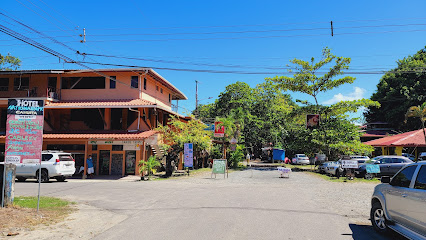
Las Olas
Experience authentic Costa Rican cuisine at Las Olas in Cahuita – where fresh flavors meet a vibrant atmosphere.
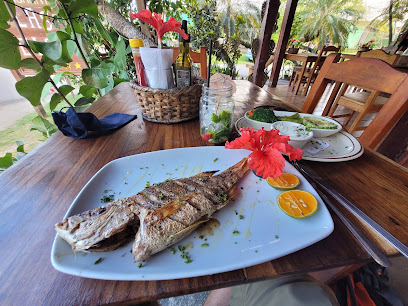
Restaurante Roberto La Casa de la Langosta
Experience authentic Costa Rican seafood at Restaurante Roberto La Casa de la Langosta in beautiful Cahuita.
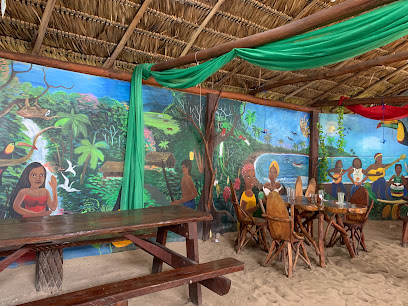
Restaurante Éwa & Lounge Bar
Experience authentic Costa Rican cuisine at Restaurante Éwa & Lounge Bar in Cahuita – where every dish tells a story.

Casa & Restaurant Caribbean Coconut
Experience tropical bliss at Casa & Restaurant Caribbean Coconut - where comfort meets culinary delight in beautiful Cahuita.
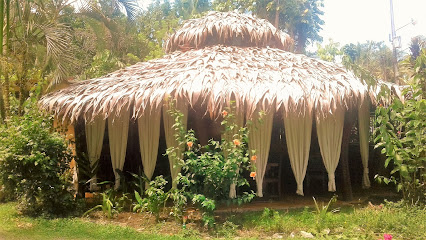
Markets, malls and hidden boutiques
Super Vaz #2
Explore local flavors at Super Vaz #2, Cahuita's vibrant supermarket offering fresh produce and a taste of Costa Rican culture.
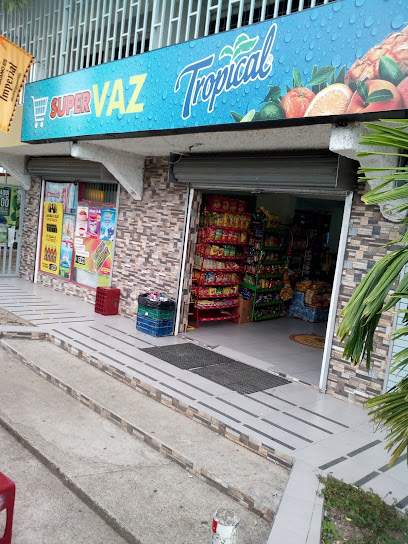
El Bodegon
Discover unique treasures at El Bodegon, Cahuita's charming used furniture store, perfect for finding memorable souvenirs of your Costa Rican adventure.
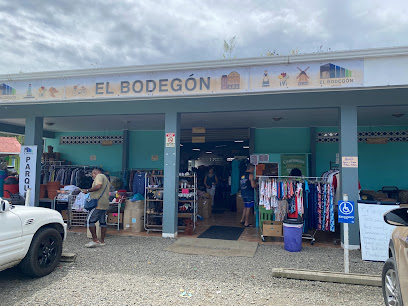
Gelato
Discover the flavors of artisanal gelato in Cahuita, Limón Province – a tropical paradise for ice cream lovers.
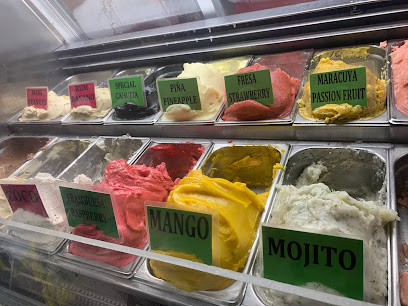
Super Safari
Discover the essence of Cahuita at Super Safari, offering local goods, fresh produce, and unique Costa Rican snacks in a vibrant supermarket setting.

Super Negro Cahuita
Experience the local charm at Super Negro Cahuita, a vibrant supermarket offering fresh produce and local products in the heart of Cahuita.

Diseños y creaciones juanita de selva
Explore the artistry of Costa Rican needlework at Diseños y Creaciones Juanita de Selva in Cahuita, where every handmade piece is a treasure.

Mulata
Discover the vibrant essence of Costa Rican fashion at Mulata in Cahuita, your go-to destination for stylish clothing and unique souvenirs.

Info Boutique
Explore the vibrant world of Costa Rican crafts at Info Boutique in Cahuita, where every souvenir tells a story.
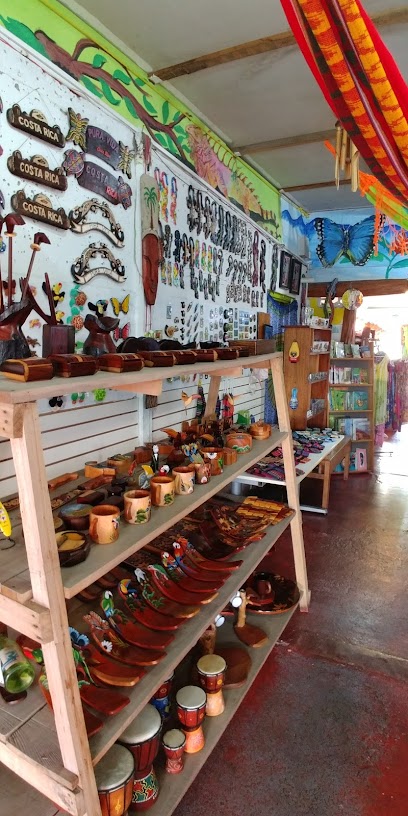
Samoa
Experience the essence of Costa Rica in Cahuita, where stunning beaches meet vibrant local culture and unique shopping opportunities await.

Verdulería piragua
Explore the vibrant flavors of Costa Rica at Verdulería Piragua, your go-to spot for the freshest fruits and vegetables in Cahuita.
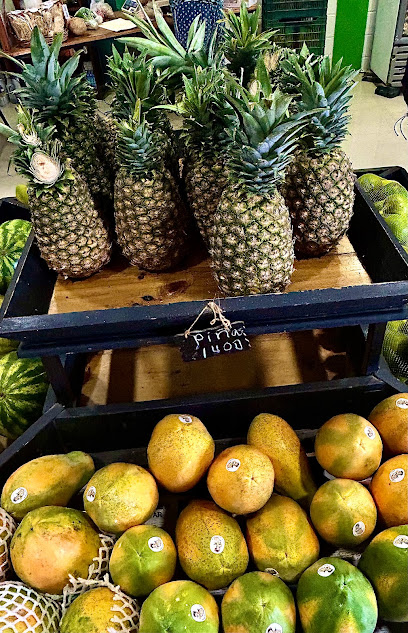
Bazar Yoreles
Experience the heart of Costa Rica at Bazar Yoreles, where local crafts and fresh produce come together in a vibrant marketplace.
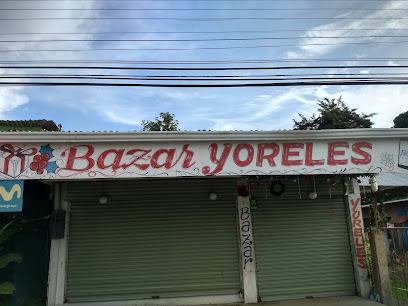
Mercado de la Fruta Prohibida
Explore the colorful Mercado de la Fruta Prohibida in Cahuita for an authentic taste of Costa Rican culture and fresh local produce.

Magpies Greengrocer Verdulería las Urracas
Explore the vibrant flavors of Costa Rica at Magpies Greengrocer in Cahuita, where freshness meets friendly service.

Minisuper Arena Blanca
Discover the vibrant shopping experience at Minisuper Arena Blanca in Cahuita, where local culture meets diverse shopping and delicious cuisine.

Le Mau Mau
Discover the flavors of Costa Rica at Le Mau Mau, a delightful bakery in Cahuita's National Park, where fresh pastries meet vibrant culture.
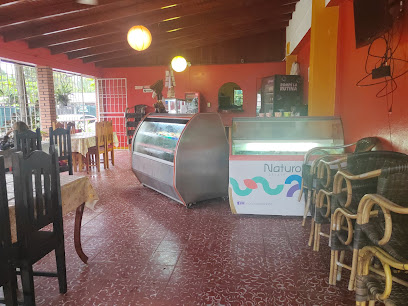
Essential bars & hidden hideouts
Coco's Bar
Experience the vibrant flavors and lively atmosphere at Coco's Bar in Cahuita, a must-visit grill for every traveler seeking local culinary delights.
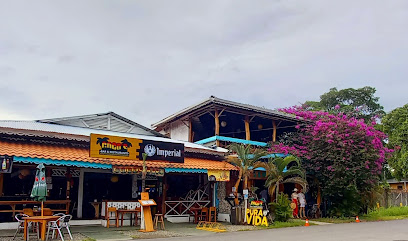
Soda Kawe
Experience the vibrant flavors of Costa Rica at Soda Kawe, a cozy restaurant in Cahuita known for its authentic and affordable local cuisine.
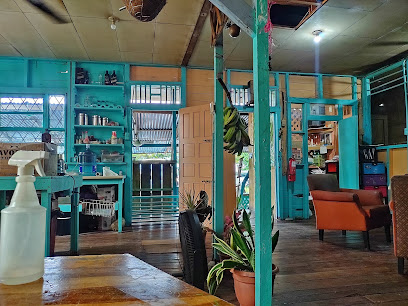
Ricky's Bar
Experience the vibrant flavors of Costa Rica at Ricky's Bar, a grill paradise in Cahuita perfect for unwinding after exploring paradise.
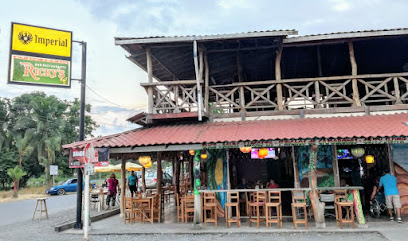
Reggae Bar
Experience the vibrant atmosphere of Reggae Bar in Cahuita, where live music, tropical drinks, and good vibes come together for an unforgettable night.
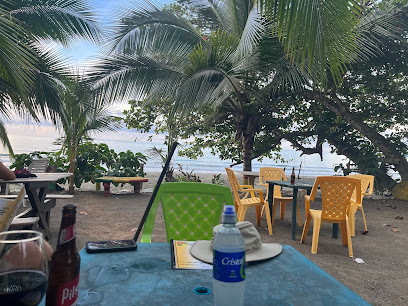
Aroma, Coffee Bar & Breakfast
Experience the vibrant flavors of Costa Rica at Aroma Coffee Bar & Breakfast, your go-to spot for delightful breakfasts and freshly brewed coffee in Cahuita.

Restaurante Éwa & Lounge Bar
Discover the vibrant Caribbean flavors at Restaurante Éwa & Lounge Bar in Cahuita, a dining experience that celebrates local cuisine and culture.
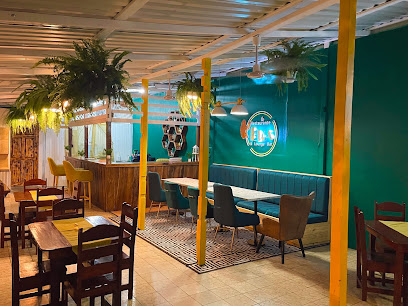
Chao's Bar Restaurant
Discover the flavors of Cahuita at Chao's Bar Restaurant, where delicious grill dishes meet a relaxed Caribbean atmosphere.
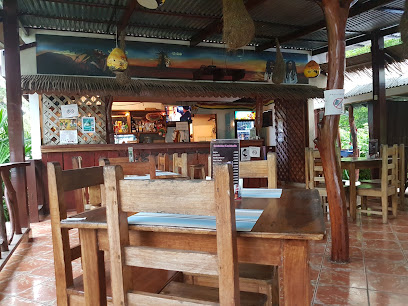
Restaurante y Bar La Peruanita
Experience authentic Costa Rican flavors at Restaurante y Bar La Peruanita in Cahuita, a dining destination for food lovers.
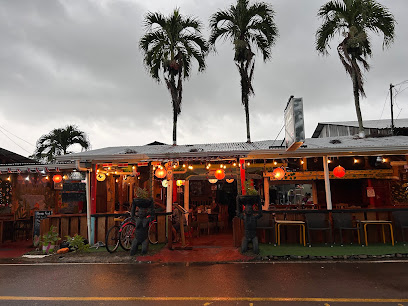
Island Restaurant and Bar
Discover the vibrant flavors of Costa Rica at Island Restaurant and Bar in Cahuita, where every dish tells a story.

Cahuita's Taste Cider and Shine
Discover unique flavors at Cahuita's Taste Cider and Shine, the premier beer garden in Costa Rica's beautiful Cahuita.
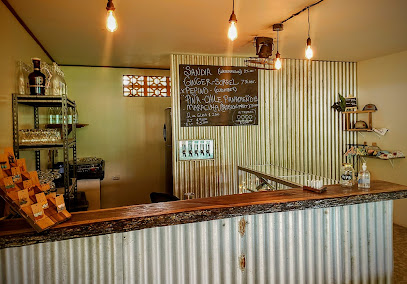
Playa Negra, Cahuita
Experience the vibrant atmosphere of Playa Negra in Cahuita, where refreshing drinks and local culture come together in a stunning Caribbean setting.
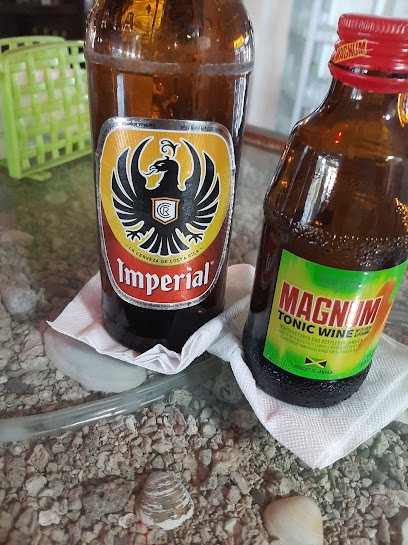
Irie Zone
Discover the vibrant spirit of Costa Rica at Irie Zone, a lively bar in Cahuita known for its tropical cocktails and lively atmosphere.
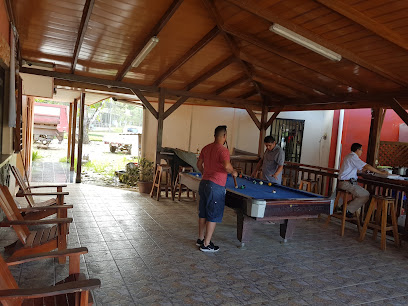
Hungry Lion's Jamaican Restaurant Costa Rica
Experience authentic Jamaican cuisine at Hungry Lion's Jamaican Restaurant in Cahuita, Costa Rica, where every bite is a tropical delight.
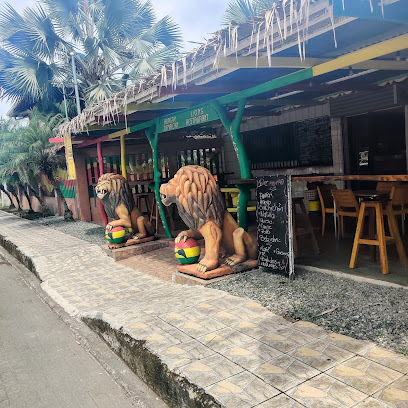
Restaurante National Park
Discover authentic Costa Rican flavors amidst the breathtaking beauty of Cahuita at Restaurante National Park, your culinary destination in Limón Province.
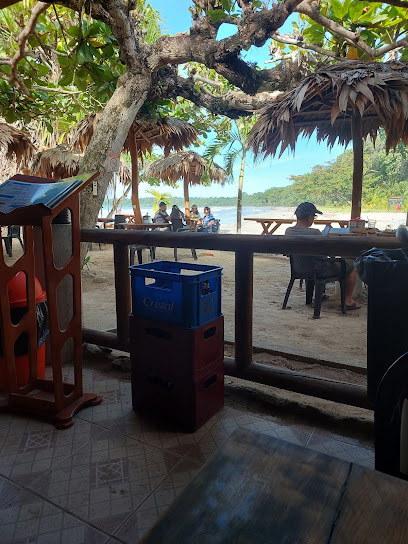
July's Snacks
Experience the vibrant Caribbean culture at July's Snacks in Cahuita, where refreshing drinks and a lively atmosphere await you.
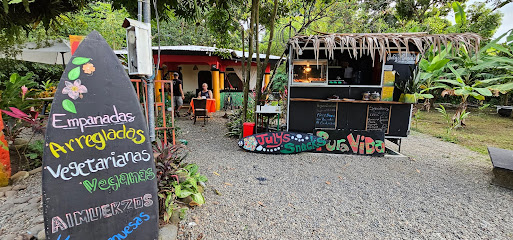
Local Phrases about Cahuita National Park
-
- HelloPura vida
[poo-rah vee-dah] - GoodbyeAdiós
[ah-dee-ohs] - YesSí
[see] - NoNo
[noh] - Please/You're welcomePor favor/De nada
[por fah-bor/de nah-dah] - Thank youGracias
[grah-see-ahs] - Excuse me/SorryDisculpe/Lo siento
[dee-skool-peh/loh see-ehn-toh] - How are you?¿Cómo estás?
[koh-moh ehs-tahs] - Fine. And you?Bien. ¿Y tú?
[byen. ee too] - Do you speak English?¿Hablas inglés?
[ah-blahs een-glehs] - I don't understandNo entiendo
[noh ehn-tee-ehn-doh]
- HelloPura vida
-
- I'd like to see the menu, pleaseMe gustaría ver el menú, por favor
[meh goo-stah-ree-ah behr ehl meh-noo, por fah-bor] - I don't eat meatNo como carne
[noh koh-moh kahr-neh] - Cheers!¡Salud!
[sah-lood] - I would like to pay, pleaseMe gustaría pagar, por favor
[meh goo-stah-ree-ah pah-gahr, por fah-bor]
- I'd like to see the menu, pleaseMe gustaría ver el menú, por favor
-
- Help!¡Ayuda!
[ah-yoo-dah] - Go away!¡Vete!
[veh-teh] - Call the Police!¡Llama a la policía!
[yah-mah ah lah poh-lee-see-ah] - Call a doctor!¡Llama a un médico!
[yah-mah ah oon meh-dee-koh] - I'm lostEstoy perdido/a
[ehs-toy pehr-dee-doh/dah] - I'm illEstoy enfermo/a
[ehs-toy ehn-fehr-moh/ah]
- Help!¡Ayuda!
-
- I'd like to buy...Me gustaría comprar...
[meh goo-stah-ree-ah kohm-prahr] - I'm just lookingSolo estoy mirando
[soh-loh ehs-toy mee-rahn-doh] - How much is it?¿Cuánto cuesta?
[kwan-toh kwehs-tah] - That's too expensiveEsto es demasiado caro
[ehs-toh ehs deh-mah-see-ah-doh kah-roh] - Can you lower the price?¿Puede bajar el precio?
[pweh-deh bah-har ehl pree-eh-soh]
- I'd like to buy...Me gustaría comprar...
-
- What time is it?¿Qué hora es?
[keh oh-rah ehs] - It's one o'clockEs la una en punto
[ehs lah oo-nah ehn poon-toh] - Half past (10)Son las diez y media
[sohn lahs dyehs ee meh-dee-ah] - MorningMañana
[mah-nyah-nah] - AfternoonTarde
[tahr-deh] - EveningNoche
[noh-cheh] - YesterdayAyer
[ah-yehr] - TodayHoy
[oy] - TomorrowMañana
[mah-nyah-nah] - 1Uno
[oo-noh] - 2Dos
[dohs] - 3Tres
[trehs] - 4Cuatro
[kwah-troh] - 5Cinco
[seen-koh] - 6Seis
[seys] - 7Siete
[syeh-teh] - 8Ocho
[oh-choh] - 9Nueve
[nweh-veh] - 10Diez
[dyehs]
- What time is it?¿Qué hora es?
-
- Where's a/the...?¿Dónde está...?
[dohn-deh ehs-tah] - What's the address?¿Cuál es la dirección?
[kwahl ehs lah dee-rehk-syohn] - Can you show me (on the map)?¿Puedes mostrarme (en el mapa)?
[pweh-dehs mohs-trar-meh (ehn ehl mah-pah)] - When's the next (bus)?¿Cuándo es el próximo (autobús)?
[kwan-doh ehs ehl prohk-see-moh (ow-toh-boos)] - A ticket (to ....)Un boleto (a ....)
[oon boh-leh-toh (ah)]
- Where's a/the...?¿Dónde está...?
History of Cahuita National Park
-
The area now known as Cahuita National Park was originally inhabited by indigenous groups such as the Bribri and the Cabécar. These communities lived off the land, practicing agriculture, fishing, and hunting. Their rich culture and deep connection to the natural environment laid the groundwork for the park's biodiversity that we see today.
-
During the 16th century, Spanish explorers arrived in the region, influencing the local cultures and economies. Despite their efforts to colonize the area, the dense forests and swamps made it difficult for them to establish a strong foothold. As a result, the indigenous cultures remained relatively undisturbed compared to other regions in Costa Rica.
-
In the late 19th and early 20th centuries, Afro-Caribbean immigrants, primarily from Jamaica, arrived in the Cahuita area to work on banana plantations and the construction of the railroad. These communities brought with them vibrant cultural traditions, music, and cuisine, which have since become integral parts of Cahuita's cultural tapestry.
-
Cahuita National Park was officially established in 1970 to protect the area's unique coastal, marine, and terrestrial ecosystems. The park's creation was driven by local and international conservation efforts to preserve its rich biodiversity, including coral reefs, mangroves, and tropical rainforests.
-
Over the years, Cahuita National Park has faced numerous conservation challenges, such as deforestation, illegal fishing, and climate change. However, concerted efforts by local communities, government agencies, and international organizations have helped to mitigate these threats. Today, the park serves as a model for community-based conservation in Costa Rica.
-
Cahuita is known for its vibrant cultural festivals, such as the annual Cahuita Calypso Festival, which celebrates the area's Afro-Caribbean heritage through music, dance, and food. Traditional practices, including fishing and crafting, are also preserved, reflecting the deep cultural roots of the local communities.
Cahuita National Park Essentials
-
Cahuita National Park is located on the Caribbean coast of Costa Rica, about 40 kilometers south of Puerto Limón. The nearest international airport is Juan Santamaría International Airport (SJO) in San José, approximately 200 kilometers away. From San José, you can take a bus from the Terminal MEPE, which offers direct routes to Cahuita. The bus journey typically takes around 4 to 5 hours. Alternatively, you can rent a car and drive to Cahuita, which allows for a more flexible travel schedule and the opportunity to explore the scenic coastal route.
-
Once in Cahuita, getting around is relatively straightforward. The park and surrounding areas are best explored on foot or by bicycle. Local taxis are available for longer distances and are reasonably priced. There are also buses that connect Cahuita to nearby towns and beaches. For those looking to explore further afield, renting a car can be a convenient option, though it's important to note that some roads may be unpaved and require a 4x4 vehicle.
-
The official currency in Costa Rica is the Costa Rican Colón (CRC). US dollars are widely accepted, especially in tourist areas, but it is advisable to carry some local currency for smaller establishments and local markets. Credit cards are accepted in most hotels, restaurants, and shops, but it is always a good idea to have some cash on hand. ATMs are available in Cahuita, but it is wise to withdraw sufficient cash before heading into more remote areas of the park.
-
Cahuita is generally a safe destination for tourists, but it is important to take standard precautions. Avoid walking alone at night, especially in unfamiliar areas. Petty theft can occur, so keep an eye on your belongings and avoid leaving valuables unattended. While Cahuita does not have specific high-crime areas targeting tourists, it is always best to stay vigilant and aware of your surroundings. If you plan to swim or snorkel, be mindful of ocean currents and weather conditions.
-
In case of emergency, dial 911 for immediate assistance. Cahuita has a local police station and a small medical clinic for minor health issues. For more serious medical emergencies, the nearest hospital is in Puerto Limón. It is highly recommended to have travel insurance that covers medical emergencies. Pharmacies are available in Cahuita where you can purchase over-the-counter medications. Make sure to have copies of important documents, such as your passport and insurance information, readily available.
-
Fashion: Do wear comfortable, lightweight clothing suitable for tropical weather. Bring a rain jacket or poncho, as sudden rain showers are common. Don't wear flashy jewelry or carry expensive items that may attract unwanted attention. Religion: Do respect local customs and traditions. While Costa Rica is predominantly Catholic, there is a mix of religious practices. Public Transport: Do be respectful and courteous to fellow passengers. Don't eat or drink on public transport. Greetings: Do greet people with a friendly 'hola' or 'buenos días.' A handshake is common, and a light kiss on the cheek may be used among friends. Eating & Drinking: Do try local dishes such as rice and beans (gallo pinto) and fresh seafood. Don't refuse food or drink offerings, as this can be considered impolite.
-
To experience Cahuita National Park like a local, visit the local markets where you can buy fresh produce and traditional Costa Rican goods. Engage with locals, as they are often friendly and willing to share stories about the area's history and culture. Don't miss the opportunity to take a guided tour with a local guide, who can provide in-depth knowledge about the park's flora and fauna. For a unique experience, join a local fishing trip or take a cooking class to learn how to prepare traditional Costa Rican dishes.
Trending Landmarks in Cahuita National Park
-
La Paz Waterfall Gardens Nature Park
-
Parque Nacional Cahuita
-
Refugio Nacional Gandoca-Manzanillo
-
Parque Nacional Tortuguero
-
Parque Nacional Los Quetzales
-
Parque Nacional Tapantí - Macizo de la Muerte
-
Playa Puerto Viejo
-
Sloth Sanctuary of Costa Rica
-
Cariblue Beach and Jungle Resort
-
Cacao Trails - Museo de Cacao
-
Parque Nacional Cahuita - Entrada Puerto Vargas
-
Atlantida Lodge - Cahuita
-
Cahuita's Taste Caribbean Soul Food
-
Cahuita National Park Hotel And Restaurant
-
Las Olas
Nearby Cities to Cahuita National Park
-
Things To Do in Bocas del Toro
-
Things To Do in Volcan
-
Things To Do in Boquete
-
Things To Do in San Jose
-
Things To Do in Manuel Antonio
-
Things To Do in David
-
Things To Do in Jaco
-
Things To Do in La Fortuna
-
Things To Do in Monteverde
-
Things To Do in Guanacaste
-
Things To Do in Liberia
-
Things To Do in Colon
-
Things To Do in Chitre
-
Things To Do in Playa Flamingo
-
Things To Do in Tamarindo





